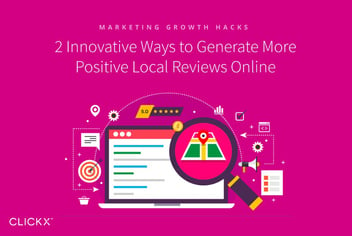How to Ensure Your Site Content is “Future-Proof”
When you are creating website content that is geared toward increasing traffic, you probably have a lot of guidelines and strategies set in place to ensure the content is in line with the latest search engine algorithm so that it is as effective as possible. This is a good tactic, however it’s also important to work toward creating content that not only works for the current algorithm but potential future ones as well—so that the content you write now will still be effective in a few years, even if left unchanged. But how can you do that? Consider these tips when you create your content.
Create Good Content
Of course, “create good content” is a vague first step. What is “good content,” even? Good content not only drives traffic based on keywords through searches related to your industry and business, but it builds authority in the eyes of users and search engines. Good content establishes you and your business as thought leaders and experts in your particular industry and instills trust into readers. It also increases engagement between your brand and its fans on social media sites.
That means that content shouldn’t simply consist of on-site content written for the sole purpose of getting visitors to convert. It should also include media like videos, e-books, infographics, how-tos, blogs, and more, and should be featured on sites that are separate from your own if possible. The more you can diversify where your content is hosted and the format it exists as, the better chance your business has at becoming the link someone clicks on when they search for something.
Don’t Use Bad Links/Vary Anchor Links
Another seemingly simple tip for creating content that won’t be rendered useless with the next algorithm update is to refrain from using bad links. Building good links is hard and takes more time than creating bad links, but they’re far more effective. As for what can be considered a “bad link,” consider these:
- Forum posting or comment links – Sure, you can post your website link in every forum you visit, but these links are meaningless and spammy when they’re posted everywhere.
- Links from non-English sites, such as sites that end in .ru, .jp, .cn, etc.
- Links to different industry websites from the same article – this looks like sponsored content and is an easy way to get penalized by search engines.
- Free directory links – like forum posts, these links may help people find something to click when they are doing a targeted search, but when it comes to more complex web searches, directory links are not very rich.
Ask for Links When Another Site Mentions You
A good way to build good links –ones that are connected to good content on other sites—is to simply set up an alert for when another site mentions your brand and when you get a notification, send an email to that siterunner asking for a link along with the mention. This shows that other sites trust you as a thought leader and can entice more visitors to click onto your site.
Maintain Marketing Compliance Content
Compliance with marketing rules and regulations refers to ensuring that your company’s marketing, advertising, and content comply with government regulations. These standards are put in place to protect consumers from being misled or deceived by businesses.
A company’s responsibility is to ensure that the messaging is consistent and adheres to those rules, whether it is on the web, in an email, on call centers, over customer service in chat boxes, on social media, or on physical collateral pieces like direct mailers.
You can utilize your marketing team to retroactively review existing content, and create guidelines on all new content that’s created. Otherwise there are automated strategies such as marketing compliance software, that can help optimize the content review process for greater effiency.
Be Honest About The Location
A more recent development regarding search results is transparency regarding what locations you actually cater to. Previously, many companies would simply put state or city names in a long list on the bottom of their sites so that when someone searched, their site would come up, regardless if they actually focused on offering service there. Now, targeted GEO-pages are looked at with more regard, and you need to be clear about the locations your business serves so that you don’t appear to be more local than you actually are. For instance, if someone searches for a Wisconsin disaster relief company, and you’re in Indiana but you serve Wisconsin, you’re probably not the best choice for that person—if only because there are closer companies that can be there more quickly. Be honest about where you are and what areas you serve, and you’ll be shown to people who search near where you’re located with—this not only means you’ll appear in more local searches, but it can mean increased conversion rates since visitors realize you actually are local.




